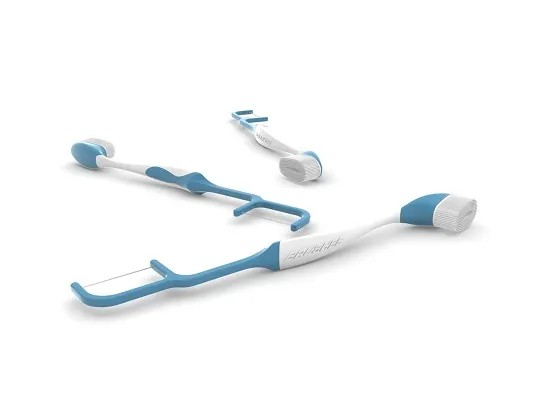In dentistry, endodontics is always advancing in its field. While fields such as cosmetic dentistry and restorative dentistry tend to have a high focus, endodontics takes on a more specific focus, but because of that focus, makes advancements in endodontics are limited in their scope. However, the latest trends in endodontics matter when it comes to treating complex cases of tooth pain, and today we’re here to share with you some of those trends within this field and give you an insider’s look into why endodontics is vital in the dental care industry.
How Endodontics Works To Move Beyond Its Limitations
Despite many people believing that endodontics is just root canals, this field is more than just that. When it comes to good oral healthcare, endodontics takes on the root of the problem, addressing tooth pain through a specific set of diagnostic criteria that family and general dentists don’t often perform. This field creates practices with their own preferred techniques, products, and methods for treating patients that move beyond the scope of what general practices can offer and makes their field especially important for patients with unresolved tooth and jaw pain with a difficult-to-find source.
More so than its uniqueness, endodontics focuses primarily on conservative techniques or techniques that attempt to maintain and preserve the natural tooth as much as possible. Through these methods, studies into new techniques and products work towards understanding disease pathology to control outcomes and reduce the failure rate of a procedure as much as possible. Because of this ongoing research, endodontics can propel forward and help maintain the integrity of people’s teeth. However, even complex cases such as vertical root fractures, failed crown placements, and periodontal infections affecting the root structure make these innovations even more challenging to overcome.
So, how can this field move forward from here? Because the endodontic field still requires extensive research to advance, case studies and field testing is our only avenue for helping patients with complex tooth problems. As general dentists and other specialties work to advance their own qualifications, endodontists have to work just as hard to keep up with the demands and trends of dental communities and the needs of their patients. Through this initiative, limitations need to be pushed and tested, and trends in the endodontic field have to be thoroughly explored to help support businesses and patients with severe dental issues.
Using Preventative Endodontics to Avoid a Root Canal Treatment
What Does The Endodontic Field Look Like Now?
For endodontists, their professional landscape is ever-evolving, but luckily there are many advancements that have been made over the past 20 years that have improved this field’s profession, instrumentation, products, and techniques to help patients with complex tooth problems. Here are some of the latest endodontic trends currently in action:
Evidence-Based Endodontics
Evidence-based endodontics consists of a specific set of protocols that endodontists use when diagnosing patients with complex tooth conditions. This concept attempts to redefine the diagnosis process and give endodontists a more measurable experience and accurate diagnosis when handling their patient’s oral health. The overall concept has had numerous studies looking into the protocols needed to advance towards treatment, and recommend the following steps:
- Ask a Specific Question: Specific questions allow endodontists to narrow down the diagnosis, giving information related to the patient’s experience, pain levels, and other areas of interest that may pertain to the patient.
- Research Evidence For Answers: Endodontists can work to provide a more accurate diagnosis through research, analyzing the patient’s symptoms and experiences with studies related to certain diseases and conditions they may be affected with.
- Decide Based On Evidence: Once all information is gathered, the endodontists will then provide a diagnosis for the patient and provide informed decisions regarding their condition and treatment plans.
Women in Leadership Roles
Throughout the last ten years, the dental workforce has started to see an increasing number of women, creating a more diversified place for equal opportunity and necessary demand. This trend has been overall increased since the early 2010s, as the ADA reports that about 35% of dentists are women, compared to 24% back in 2010. Dental school enrollment now has a 50-50 gender split in comparison to previous years, and this includes women in the endodontic field. According to statements from the American Association of Endodontists, the organization hosts three female leaders who previously served on its board of directors and trustees, increasing women’s leadership throughout other dental associations and challenging social prejudices against women in this professional field.
The Use of Microscopes in Endodontics
While microscopes aren’t entirely a new concept for dentists, how microscopes are being implemented in endodontics is drastically changing. Microscopes were originally used only in diagnosis and nonsurgical procedures for endodontic tooth cases. However, microscopes have begun being introduced into surgical procedures, acting as an assistant and safety measure against procedure failure rates. This use of microscopes has been able to help procedures for osteotomies, root end preparations, and inflammatory tissue removal. Microscopes have been able to help endodontists gain an inside look into the tooth’s structure and identify abnormal formations and improve surgical outcomes.
Mineral Trioxide Aggregate
For endodontists and many dentists, the products and materials they use are their lifelines when restoring teeth. Hence, one of the newest trends to hit the field is the use of mineral trioxide aggregate. This material contains fine hydrophilic particles and is used as an endodontic cement that hardens in the presence of dampness, saliva, and blood. Most often used for the insides of root canals, this cementing material is radiopaque, biocompatible, and hardens quicker than other amalgams and cement. Because of these benefits, it creates an artificial barrier and hardens tissue formation when treating immature apexification teeth.
WaveOne Gold Endodontic Files Review
Apex Locators & Rotary Instruments
Both of these tools provide substantial benefits for endodontic surgery and root canal procedures; both in some of the latest trends, these tools have become more digitized and advanced to improve these methods and reduce failure rates. For apex locators, electronic apex locators have become integrated with CBCT, microscopes, and dynamic navigation programs to improve the outcomes of surgeries performed. Rotary instruments have been improved by their materials, using nickel-titanium alloys to enhance the cleaning and shaping process for treating root canal systems.
While this only highlights some of the latest concepts, endodontists have helped contribute to this research on a massive scale and, overall have helped these trends advance to provide patients with safety, security, and comfort for their procedures. Search BlogSend



